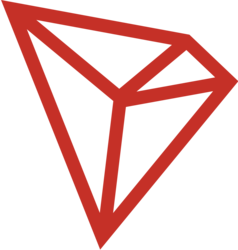The virtual reality market has shown quite impressive growth recently. Estimates of the virtual reality market volume vary between analysts, but the dynamics are clear. In 2017, the VR market was estimated to be between 7 and 10 billion dollars. By the end of 2020, depending on the methods used, the estimates were between 15 and 18 billion. By 2026, it is expected to grow to 70-120 billion.
There are two main reasons behind the rapid growth:
- Technological advancements: For decades, virtual reality was an “awkward gimmick” at best. Today, technology allows us to create truly pleasant and engaging virtual reality experiences. Moreover, technological refinement has allowed virtual reality to become a viable tool for education, training, design and in many other key industries.
- Global pandemic: Restrictions and quarantines have spurred the increase of remote work and entertainment developments. The need to be prepared for such emergencies has also been finally acknowledged resulting in virtual reality development becoming a priority for many players.
Naturally, such a promising market has been quickly noticed by investors, entrepreneurs and companies. So today we see a plethora of new virtual reality projects and a great influx of money and resources into the industry.
Not only large corporations are involved in virtual reality development. Some projects are based on the principles of another booming industry – blockchain and DeFi.
Decentralization brings a lot to the table:
- Lack of centralized control ensures that the virtual world cannot suddenly change on the whims of its owner – it lives its own life, governed by all its users through voting.
- Blockchain ensures protection of user-created VR content. Blockchain-based copyright protection can be non-intrusive and accessible for content creators, not demanding any extra efforts from them. Therefore, a lot more people will be encouraged to create VR content. The resulting increase in VR content diversity will be beneficial for users and platforms alike
- Decentralized technologies combined with efficient copyright protection make it easier to connect virtual platforms seamlessly. So we can get a proper virtual world to work and have fun in.
- Combining virtual reality with promising DeFi assets facilitates VR project popularity among investors and ensures that the industry will get enough resources to continue its rapid development. Financial sources diversification will also help to maintain a healthy competition in the industry.
One of the projects that lean heavily into the advantages provided by blockchain is Victoria VR. This platform unites various VR platforms into one ecosystem with photorealistic graphics and user-created content. Thus, instead of a multitude of task-specific platforms, users get a full-fledged virtual world where they can:
- Visit popular tourist destinations
- Play games
- Run businesses (both virtual and real) and make real-world money
- Work
Obviously, none of these activities in virtual reality will require users to leave the comfort of their rooms and face risk of contracting any disease.
And the icing on the cake: Victoria VR provides an opportunity to make money even without ever taking a glance at its virtual world. VR token holders can effortlessly make 20% per annual interest on the DEXFIN Exchange.
DEXFIN is a unique exchange that combines multiple types of crypto platforms into one: its users can trade cryptocurrencies, purchase tokenized assets, join crowdfunding campaigns, participate in token staking and take part in IEOs of the most innovative projects in the market.
Victoria VR’s IEO is hosted on the DEXFIN platform, since this project promises to change the face of virtual reality forever and also offers great opportunities for DEXFIN users. Just by holding VR tokens on the DEXFIN Exchange, investors will get 20% in VR tokens per year.
Thus, two innovative projects, striving to facilitate cooperation in decentralized and competitive industries, work together to make crucial innovations not only accessible but profitable for everyone. Wouldn’t it be great to turn VR from “something you have to spend a lot of money on” into “something that brings you a lot of money”?




























